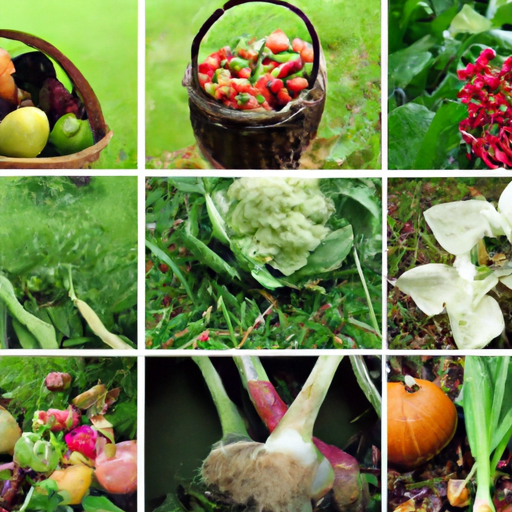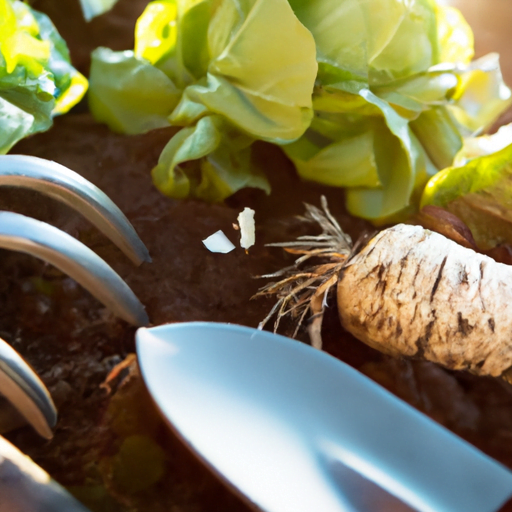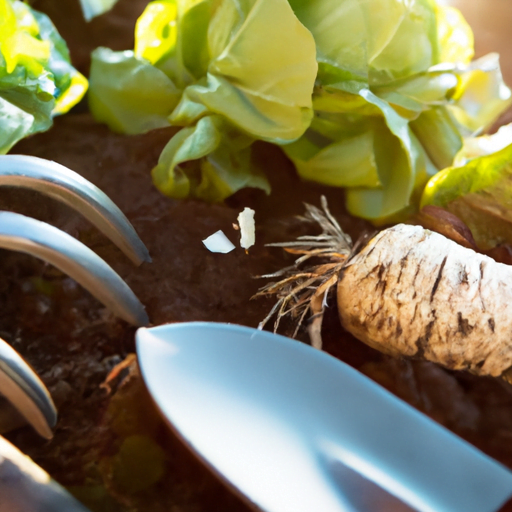Do you ever wonder what the healthiest foods are that you can grow on your off-grid homestead? I mean, you’re living off the land now, so it’s important to know what you’re putting into your body, right? Well, you’re in luck because I’ve got all the details on the top 10 healthiest foods that you can grow right on your own little slice of off-grid heaven.
First things first, let’s talk about what it means to live off grid. Basically, it means you’ve chosen to disconnect from the traditional power grid and live a more self-sufficient lifestyle. And when you’re living off grid, growing your own food becomes essential. But not just any food – you want the healthiest options possible, right? That’s where these top 10 foods come in.
So, what exactly are the healthiest foods to grow on your off-grid homestead? Well, get ready for a list of super nutritious and delicious options. Think leafy greens like kale and spinach, which are packed with vitamins and minerals. And then there’s the powerhouses of nutrition like broccoli and Brussels sprouts. Plus, don’t forget about the root vegetables like carrots and beets, which are not only healthy but also great for storing during the colder months.
Sounds pretty good, doesn’t it? And that’s just a taste of what you can expect from the full article. So, if you want to learn more about the top 10 healthiest foods to grow on your off-grid homestead, be sure to keep reading. Trust me, your body will thank you for it. Living off the grid has become a popular lifestyle choice for many people seeking a simpler and more sustainable way of life. By disconnecting from the traditional power grids and relying on alternative sources of energy, off-grid living offers a myriad of benefits. In this article, we will explore the top 10 healthiest foods to grow on your off-grid homestead, highlighting their nutritional benefits and suitability for off-grid living.
Living off the grid allows you to reduce your reliance on external resources, such as water, electricity, and food. While it may seem daunting at first, this independence can lead to a sense of self-sustainability and empowerment. By growing your own food, you can take control of what you eat, ensuring that it is fresh, nutritious, and free from harmful chemicals. Additionally, growing your own food on an off-grid homestead provides an opportunity to develop a deeper connection with nature and the earth.
Off-grid homesteading refers to a lifestyle where individuals or families live in a self-sufficient manner, often in remote or rural areas, and produce their own food, water, and energy. This lifestyle offers several advantages, including reduced reliance on external systems, improved resilience in the face of emergencies or disruptions, and the ability to live in harmony with nature. However, it also comes with its fair share of challenges and considerations, such as the need for proper planning, acquiring the necessary skills and knowledge, and adapting to a more sustainable way of living.
One of the most important aspects of off-grid homesteading is growing your own food. By producing your own fruits, vegetables, and herbs, you gain access to fresh and nutritious produce that can significantly enhance your overall health and well-being. Moreover, growing your own food allows you to have control over the use of pesticides and chemical fertilizers, ensuring that you and your family consume food that is free from harmful substances.
Food security is another crucial benefit of growing your own food on an off-grid homestead. By cultivating a diverse range of crops, you can ensure a steady supply of food even in times of scarcity or disruptions in the food supply chain. This increased food security can bring peace of mind and alleviate the concerns that come with relying solely on external sources for sustenance.
When it comes to selecting the healthiest foods to grow on your off-grid homestead, several criteria should be taken into consideration. First and foremost, nutritional density should be a key factor. Nutrient-dense foods are those that provide a high amount of essential vitamins, minerals, and other beneficial compounds while containing relatively fewer calories. These foods offer the most bang for your buck in terms of nourishment and can help promote overall health and well-being.
Sustainability of growth is another crucial consideration. When choosing foods to grow on your off-grid homestead, it is important to select crops that are well-suited to your climate, soil type, and available resources. Opting for plants that thrive in your specific conditions will increase the chances of successful yields and require less input in terms of water, fertilizer, and overall maintenance.
With these criteria in mind, let’s explore the top 10 healthiest foods to grow on your off-grid homestead:

Leafy Greens
Leafy greens are packed with essential vitamins, minerals, and fiber. They are low in calories and provide a wide array of health benefits. Kale, spinach, and Swiss chard are excellent choices for growing on your off-grid homestead. These leafy greens can be harvested throughout the year and added to salads, soups, or smoothies for a nutrient boost.
Cruciferous Vegetables
Cruciferous vegetables, such as broccoli, cauliflower, and cabbage, are rich in vitamins, minerals, and antioxidants. They are known for their cancer-fighting properties and can be grown successfully in a variety of climates. These versatile vegetables can be enjoyed in stir-fries, roasted, or added to soups and stews.

Berries
Berries are not only delicious but also highly nutritious. Blueberries, strawberries, and raspberries are rich in antioxidants, vitamins, and fiber. They can be grown in containers or in the ground, making them an ideal choice for off-grid homesteads. Enjoy them fresh, add them to smoothies, or use them in desserts and jams.
Legumes
Legumes, such as lentils, chickpeas, and kidney beans, are excellent sources of plant-based protein, fiber, and essential nutrients. They are relatively easy to grow and can enrich the soil with nitrogen, making them beneficial for crop rotation. Enjoy them in soups, stews, salads, or even as a base for plant-based burgers.
Root Vegetables
Root vegetables, such as carrots, potatoes, and beets, are not only versatile but also highly nutritious. They are packed with essential vitamins, minerals, and fiber. These hardy vegetables can withstand different growing conditions and provide a sustainable source of food on your off-grid homestead. Enjoy them roasted, mashed, or added to stews and casseroles.
In conclusion, living off the grid offers numerous benefits, including reduced reliance on external resources, self-sustainability, and increased connection with nature. Growing your own food on an off-grid homestead can provide access to fresh and nutritious produce, enhance food security, and allow you to control the use of pesticides and chemicals. When selecting the healthiest foods to grow, consider nutritional density, sustainability of growth, and suitability for off-grid homesteading. Leafy greens, cruciferous vegetables, berries, legumes, and root vegetables are excellent choices that can thrive in a variety of climatic conditions. Start your off-grid homesteading journey by planting these nutrient-rich foods and reap the rewards of a healthier and more self-sufficient lifestyle.




